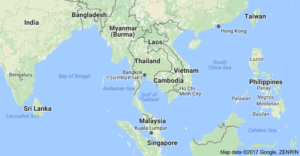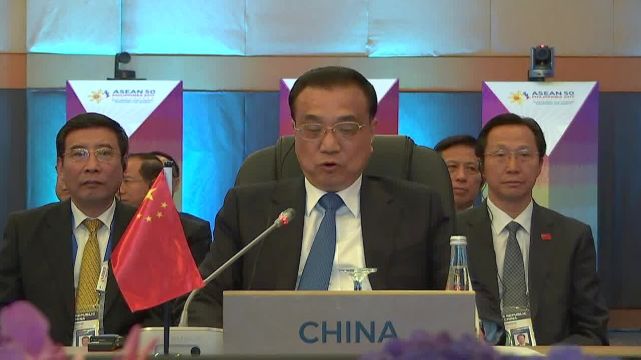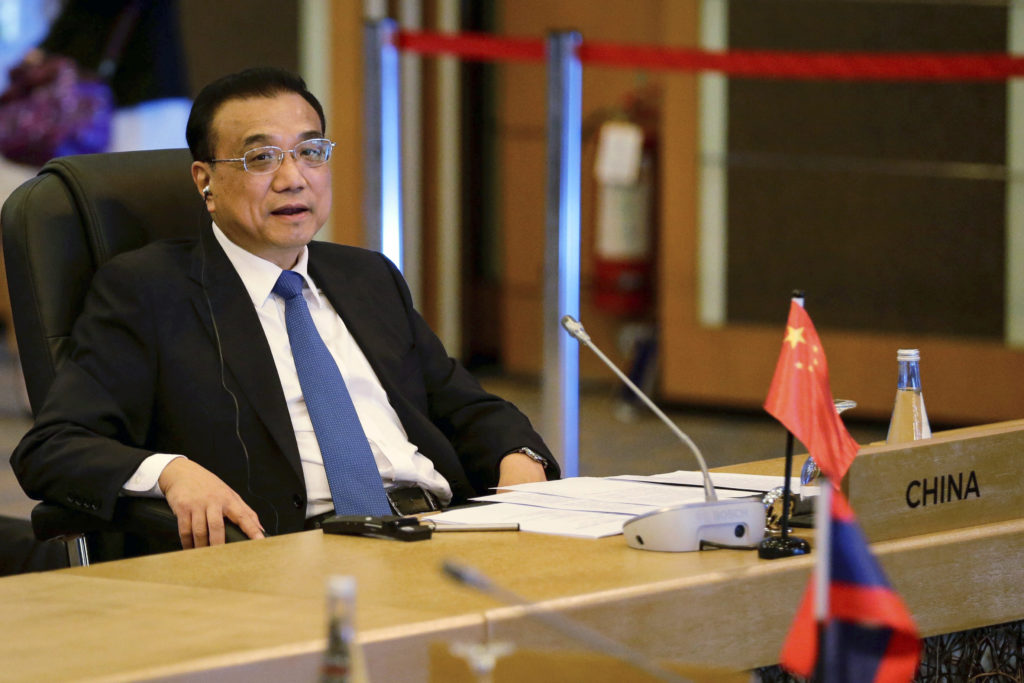ASEAN 2017: Manila – DRAFT JOINT AGREEMENT: Asean, China agree to start talks on code of conduct in South China Sea
Southeast Asian nations and China are set to announce the beginning of talks for the adoption of a code of conduct in the South China Sea that will prevent their competing claims in the heavily disputed waterway from erupting into conflict.
“While the situation is calmer now, we cannot take the current progress for granted,” the Association of Southeast Asian Nations (Asean) said in a draft of a joint statement to be issued during its 31st summit in Manila, a copy of which was seen by the Inquirer on Monday.
<>
ADVERTISEMENT: This space is reserve for your Ad, contact aseanews.net now!
<>
“[It is] important that we cooperate to maintain peace, stability, freedom of navigation in an overflight above the [South China Sea], in accordance with international law,” said the draft statement, which was expected to be issued after Asean’s summit with China on Monday.
“It is in our collective interest to avoid miscalculations that could lead to escalation of tensions,” it said.
2002 declaration
The Asean leaders reiterated their commitment “to fully and effectively implement the Declaration on the Conduct of Parties in the [South China Sea] in its entirety.”
Adopted by Asean and China in 2002, the declaration requires claimants to maintain the status quo in the strategic waterway through which $3 trillion in global trade passes every year.
China claims almost the entire South China Sea, including parts of the strategic waterway claimed by four Asean members – Brunei, Malaysia, the Philippines and Vietnam.
Taiwan also has claims in the South China Sea.
Despite the 2002 declaration, China has reclaimed land and built artificial islands on seven reefs in the South China Sea in recent years and topped these with military installations.
China’s main challenger
President Rodrigo Duterte has grown closer to China since he took office last year and Vietnam has emerged as Beijing’s main challenger in the South China Sea.
<.
<>
China’s move to pressure Vietnam to stop oil drilling in the Paracel chain in July brought relations between the communist neighbors to a low.
But on Monday, Vietnam and China said in a statement that they had agreed to back away from conflicts in the South China Sea, following a state visit to Vietnam by Chinese President Xi Jinping on Sunday.
.
Chinese Premier Li Keqiang talks during the 20th ASEAN China Summit in Manila, Philippines, Monday, Nov. 13, 2017. (Linus Escandor/Pool Photo via AP)
.
They said they agreed to “well manage disputes at sea, make no moves that may complicate or expand disputes, [and] maintain peace and stability” in the South China Sea.
Negotiating framework
Southeast Asian foreign ministers and China adopted the negotiating framework for a code of conduct in the South China Sea in August, and Asean said in its draft statement on Monday that it was looking forward to the “early conclusion” of the code.
The framework seeks to advance the 2002 declaration and Asean and China have hailed its adoption as progress.
But critics see it as a tactic by China to buy time and consolidate its power, and international security experts don’t see the code emerging soon.
“Those negotiations, if they begin—and they haven’t—would still take years,” Gregory Poling, director of Asia Maritime Transparency Initiative, said on the sidelines of the Stratbase ADR Institute Forum held in Makati City on Nov. 8.
“What I expect is that the disappointments that [are] going to be obvious after this year might finally kick Asean states into gear, make them realize that they need to think of a different venue to get this done,” Poling said.
Multilateral approach
Dindo Manhit, president of private think tank Stratbase ADR Institute, proposed a multilateral approach based on international law to resolve the disputes and ultimately guarantee regional stability, something he said the Philippines could have spearheaded following its victory over China in the UN-backed Permanent Court of Arbitration in The Hague last year.
Deciding a case brought by the Philippines, the Hague tribunal ruled in July last year that China’s sweeping claims in the South China Sea had no basis in international law and that it had violated the Philippines’ rights to fish and explore for resources in its 370-kilometer exclusive economic zone in the waterway.
But “China has ignored the Hague decision,” said Masashi Nishihara, president of the Research Institute for Peace and Security in Tokyo.
“Four air bases have been built on the [artificial] islands, and it’s clear that its strategy is to prevent unity in the Asean,” Nishihara said.
The experts recommended that Asean continue its multilateral approach by forming a South China Sea Group and maintaining close relations with the United States and its regional partners, including Japan and Australia. —With reports from the wires/atm /pdi
Check out our Asean 2017 special site for important information and latest news on the 31st Asean Summit to be held in Manila on Nov. 13-15, 2017. Visit http://inquirer.net/asean-2017.
>


<>
NOTE : All photographs, news, editorials, opinions, information, data, others have been taken from the Internet ..aseanews.net | [email protected] |
For comments, Email to :
Aseanews.Net | [email protected] | Contributor










